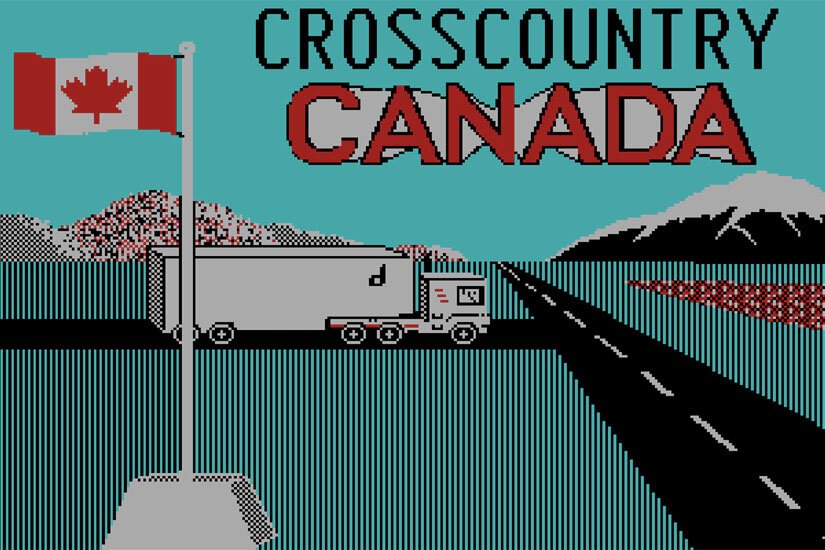On the road again
The early ’90s was a different time. In Toronto, the SkyDome was still the SkyDome. Up north, Nunavut had yet to appear on the map. And all over Canada, so many public schoolchildren learned their provinces and territories from a computer game.
CrossCountry Canada is a long-haul trucking simulation probably as monotonous as the job itself, yet loved by those who grew up playing it. The aim is straightforward: Pick up a series of commodities from all over the country and deliver them to their final destinations. Along the way, learn about geography, navigation and regional economies. A typical mission might start in Montreal and have you searching for everything from apples to chemicals on your way to Whitehorse. The game lets you know when you’re switching time zones and passing landmarks like the CN Tower and Assiniboine River. Its repetitive, four-colour scenery lulls you into a calm so serene you don’t even realize you’re learning patriotic factoids as you go.
The simulator was designed by Didatech Software (now Ingenuity Works), a Vancouver-based development company, as a follow-up to CrossCountry USA during the edutainment boom of the late 1980s. Players must use DOS-based text commands to accomplish everything from turning on their rig to filling up its tank.
More than just an educational experience, CrossCountry Canada taught practical life lessons and was steeped in realism. Just like you, your little avatar required regular food (sourdough pancakes, for example) and sleep to work. The game also posed the occasional moral quandary: Do you pick up hitchhikers despite being warned they can be dangerous? (I always did—and my riders consistently departed with nothing more than a carefree wave. Friends of mine weren’t always so lucky.) There was the unexpected too. Sometimes, you’d just be tooting along minding your own business when suddenly your window would shatter or your tire would pop. Life throws us curveballs. So did CrossCountry Canada.
The computer game also fostered independence, though this may have been unintentional. CrossCountry Canada gave nothing away and never seemed to include a help guide, which added to its unique charm. It was up to the user to learn the commands, which resulted in most of its players driving around aimlessly trying to figure out how to turn on their windshield wipers. While it certainly had a steep learning curve, just discovering a new command felt like an accomplishment—never mind making the deliveries. Unlike its contemporaries, CrossCountry Canada didn’t handhold its players. It just built the world—our country—and let the user discover it for themselves.
Perhaps the game’s greatest legacy is that it has settled so comfortably into a genre of campy Canadian nostalgia often reserved for pop culture giants like The Littlest Hobo. Twenty-five years down the road, CrossCountry Canada has, for most of us, faded into a pleasant pixelated memory. Or at least it did until 2015, when it was unearthed by Vice Canada—they found an online version of the game. When I started up that old 18-wheeler as an adult, the familiar engine sound—somewhere between a zipper and a fart—was just as enjoyable as it had been all those years ago.
This story first appeared in Passport2017, a Strategic Content Labs and Heritage Canada project.
